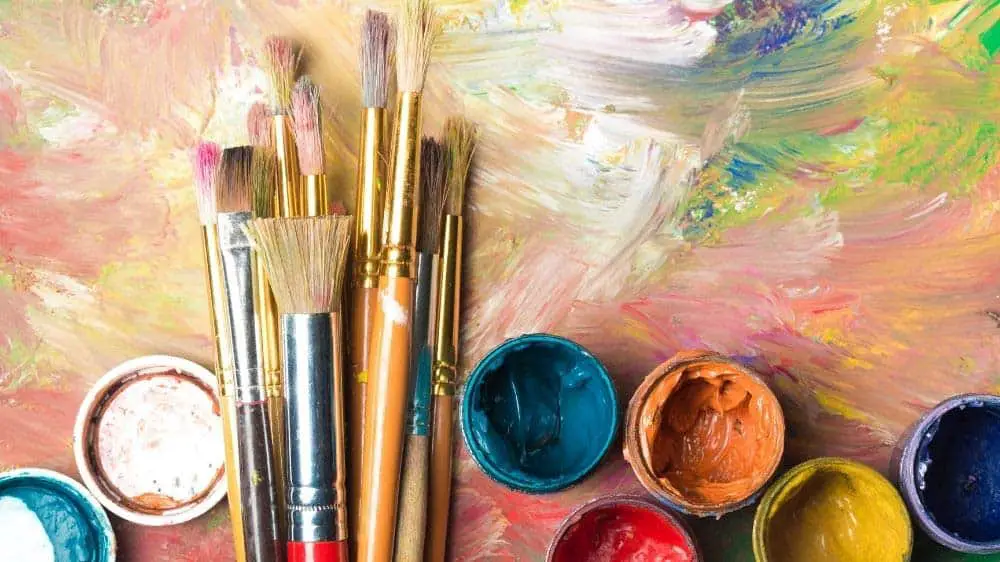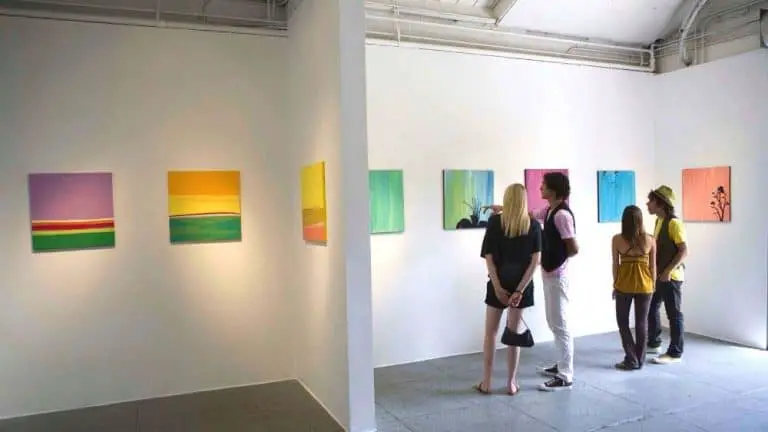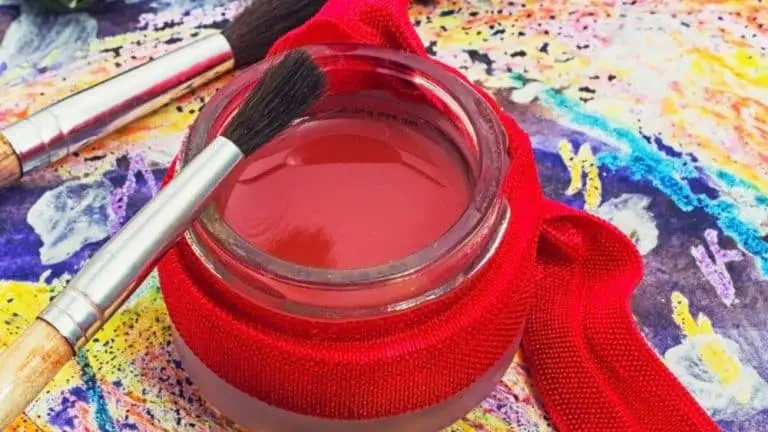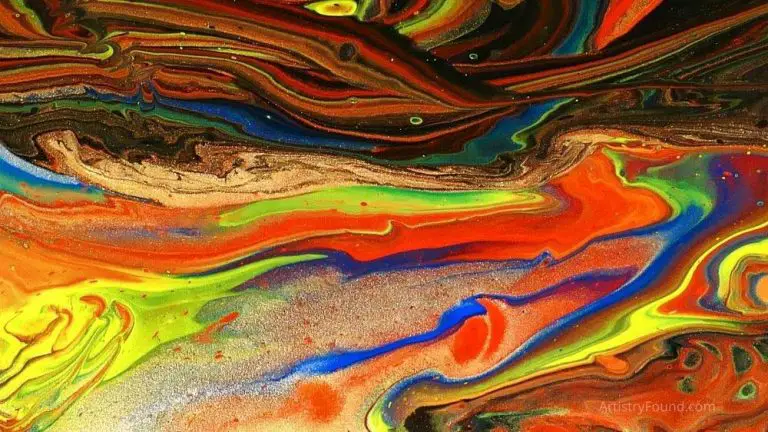Should I Sell My Original Paintings Or Just Prints? (Explained!)
Should I sell my original paintings? As an artist, this can be a tough question to answer. While artists often have an emotional attachment to their paintings, deciding whether to sell the original instead of a print should really be a business decision that matches the artists long-term goals.
A painter wanting to compete in the high-end, collectable art world should be open to selling their original paintings. Paintings can sell for large amounts as the painter becomes more established, and it does not restrict the artist from selling limited or unlimited edition prints of the same painting.
Some buyers require a one-of-a-kind copy, and others will prefer a print that displays the artist’s artistic abilities at a lower price. Selling either an original painting or a print will vary according to the audience you intend to target.
Keep reading to find out more about selling original paintings vs. prints.

(This article may contain affiliate links and I may earn a commission if you make a purchase)
What Makes A Painting Original
To best describe an original painting, it is important to look at what makes it original. An original painting is a unique creation that is sold only to one buyer. It can range in size, allowing the artist to display his/her unique abilities.
If you want a painting to be considered original, you have to follow certain practices to ensure that the piece is considered authentic from a buyer’s perspective. The most common way of providing valid information of an original painting can be done by having the following listed information:
- A certificate of authenticity
- An appraisal of the painting
- Documentation of work
For a buyer, an original piece can be a great acquisition if it’s purchased from an established artist. The collector will expect to pay a higher price because they will be the only person to have the painting.
Selling Original Paintings
When you sell original paintings, many buyers will take into consideration the reputation that you have as an artist. Paintings from well-known artists are usually priced higher because the demand is higher. That means that paintings will be easily sold because of the reputation that the artist has built over time. On the other hand, it could take longer to sell because of its much higher price.
Some benefits that come with selling original paintings are:
- Original, certified paintings hold a higher value allowing the artist to sell their work for a better price.
- The artist can create a series around a popular painting in order to create a collection of paintings that will be in high demand.
- Collectors will continue buying paintings if they like the artist’s artwork.
If you are interested in only selling original paintings, you will have to create quality pieces to attract a market and increase interest in your work over time. You want desirable buyers to look forward to your next paintings, making them easier to sell, and giving you the resources to continue creating new work.
It is also common to see artists create multiple paintings but choosing to sell only some of the originals. The reason behind this is that the artist wants their original paintings to be in lower supply within the market, this gives the artist the ability to price the remaining pieces higher over time.
If the seller is an emerging artist, it is important to start building a history of their career by keeping records of their completed works. If a painting is sold, the artist will be able to show legitimate proof of the success of their work in both private and public collections.
There is also a possibility that your paintings may not sell right away. This is something that can take some time as you begin to develop your artistic reputation. As a developing painter it’s important not to price your work too high initially. Selling a higher quantity of paintings at a lower price will give you more exposure, and others will learn to appreciate your work. You can always raise your prices as your work become better known.
It is important to understand the market that you are focusing on painting for because they are the ones that will follow you throughout your career. Normally, collectors should be your target market because they are always looking to purchase unique paintings that will hold or increase in value.
What Is An Art Print? (Identifying Fine Art Prints)
Some buyers will love your work but not be in the market for an expensive original painting. In this case, you can sell less expensive art prints of your painted piece.
An art print is categorized as a reproduction of a painting that has already been created. There are different styles of prints that can be created depending on the materials you use and the number of prints you want to create.
When artists create prints from their original work, they often use one of these three methods:
- Giclee Print: A style of printing done using a digital image of the art piece and an inket printer. Can be used to make paper or canvas prints.
- Lithographic Reproduction: A color separation is created from a photo of the original art piece and transferred to a photosensitive plate. These reproductions are also referred to as posters.
- Serigraphy: Also referred to as screen printing, serigraphy is a process where printing is completed through a thin screen, forcing the ink to stick to the paper under the screen.
Prints are normally created on different kinds of paper where the artist can display their original paintings through a simpler and more affordable process.
Prints made using the serigraphy technique are often considered to be “original prints”, while Giclée and Litho prints are reproductions.
Original Prints (Serigraphy)
Original prints are known to be inefficient because it involves the artist taking the time to make each print by hand. In this case, serigraphy is time-consuming but is also valued greatly because of the time and dedication that the artist puts into recreating the original painting.
Many times, these are sold as limited editions and usually do not exceed 50 copies. These prints are more personalized and can be the next best thing to buying an original painting. The special part about original prints is that there is a limit on the number that is sold so that you will have created a quality print with a limited supply.
If you choose to create limited-edition prints, you will want to ensure that the prints look impeccable because these prints will represent your artistic abilities. Giving buyers this option will raise interest in the work that you do.
If you want to attract a wider audience, you might want to consider the price that you expect buyers to pay for your work. Selling original prints is a way to give others the opportunity to obtain a copy of a painting that is no longer available or you do not wish to sell at this time at a more affordable price point.
Reproduction Prints (Lithography & Giclee)
Reproducing a print is a simpler way of making prints digitally. The use of digital technology helps the artist have prints available on demand because of how easy it is to print them.
When the artist creates many prints, it is easier to use a lithography or giclee printing technique. This process is commonly used to create prints without needing the artist to be involved.
Once a digital file is made of the painting, either by taking a digital photograph or by the art work being scanned, identical prints of the painting can be printed over and over again.
Normally, reproduced prints are easily accessible because there are no limits on the number of prints that you may choose to sell. You can print out an unlimited number of prints at a time and then print some more when the first ones sell.
Selling Art Prints of Paintings
Original and reproduction prints work well when your style of art is wildly popular with a large demographic of buyers who aren’t high-end collectors, but are willing to pay for a relatively inexpensive reproduction print.
Many artists will reproduce their one-of-a-kind paintings by making prints when their paintings have been successfully sold. If the painting gets a positive response, it will become more desirable as a print.
It will then be up to the artist to make the decision to recreate the piece by making prints or letting it be a stand-alone original. (Keep in mind that the digital scan of a painting will need to be done prior to selling the original).
It might be helpful to focus on the different selling points that will help you gain more followers. In this case, if you are an artist that wants to offer affordable access to your artwork, making fine art prints might be the route that you want to take. This does not mean that your work is less worthwhile. Instead, it helps you expose your work to more people.
When selling original prints, the benefits can be bigger than you think:
- You are selling a higher-quality print.
- You can make your expensive artwork more accessible.
- You can continue selling unlimited edition prints if you sell out.
If you choose to sell reproduction prints, the benefits can also be rewarding:
- The popularity of a print can increase the value of your original work.
- You can offer different print sizes.
- You can make it more far more affordable for someone to purchase your work.
On the surface, selling prints might not seem as important as selling original paintings. If you expose your work properly, both types of prints can become a long-term investment that can lead to a successful career.
In either case, you can add substantial revenue to your bottom line instead of, or in addition to, selling the original painting.
Limited Edition Prints
Limited edition prints are the artist’s decision to create a certain number of prints of a particular painting. Once the prints are sold, there won’t be any more available.
Selling a limited edition print can be a convenient and more intriguing option for buyers. You are basically allowing buyers to have a copy of a painting that might otherwise be out of reach for them financially, while still creating something special that gives them more of a direct connection to you and your work.
Some prints are created as limited-edition pieces to make the purchase more appealing. Prints are normally numbered and signed by the artist. This is a way of ensuring that the art lover is getting a true limited-edition print that is authentic.
Many art enthusiasts can purchase limited-edition pieces that will become treasured pieces of any art collection.
Which One Is More Profitable?
You might be wondering which of these alternatives (original painting, original print, or reproduction print) will be the most profitable one to sell for you as the artist?
Keep in mind that each of these options target a different segment of the art buying community:
| Type of Art | Market | Profit |
|---|---|---|
| Original Painting | – High-priced – Only one original – Serious art collector | Highest profit on a per piece basis |
| Original Print | – Medium price – Limited quantity – Larger buyer market | Medium profit per piece but more pieces to sell |
| Reproduction Print | – Lowest sale price – Unlimited quantities – Mass market | Lowest profit on a per piece basis but potentially unlimited number of sales. |
This means that monetary value in the art can be thought of in several different ways. How large a profit from a painting can vary based on the piece that you are trying to sell.
Original paintings will normally give you the highest profit since you will be able to charge a higher price for them. The downside to this is that they are not always easy to sell, and there’s only one to be sold. Selling an original painting will take longer, particularly if you are a new artist.
If you want to sell your original painting and you want to make the best profit, the markets to focus on are as follows:
- Art collectors
- Art galleries
- Auctions
It can be difficult to sell your paintings if you are not well known amongst other artists and the art buying community. The best way to make the highest profit is to find the person who enjoys your work. This is a way of introducing yourself as an artist and not limiting how you price your paintings.
When it comes to prints, you might be able to sell many of them, which will help you make as much as you would from selling the one painting. Prints, however, are priced lower and have a lower profit margin, but it can be very profitable to sell them in quantity regardless if you are a new or established artist.
The downside is that the price of a print is much lower than an original painting. Some painters feel that if they sell an original painting at a higher price, they will not have to create prints to make a good living. As a seller, you will have to make the decision that works best for you.
If you enjoy creating prints, you may want to consider selling limited edition prints. These types of prints are more appealing and can be priced higher because of the limit in the copies that are sold. Art connoisseurs who end up buying limited edition prints will know that they are acquiring a great piece of art.
In my opinion, the most profitable way to sell a painting is to sell it using all three methods. There is no reason that a popular painting can’t be sold as an original in addition to selling limited and unlimited prints of the painting at the same time. Of course, this may not be the best course of action for all paintings, but certainly for the most popular ones.
Can I Sell Prints Once I Sell My Original Painting?
The cool thing about selling original paintings and prints is that there are very few rules as to how you can go about selling your work. For instance, you can sell prints (both limited and unlimited) before, during, or after you sell the original painting.
In fact, you may choose to only sell prints and keep the originals for yourself. It’s entirely up to you. The only hard and fast rule when it comes to selling original artwork or prints is this:
- If you sell an original painting or a limited edition series of prints, you owe it morally and legally to your buyers to not create more direct original copies than stated.
In other words, you can’t paint another identical “original painting” or change a stated limited edition of 50 prints to 100 prints after you sell the original 50.
When selling an original painting you are making a guarantee to the buyer that that is the ONLY painting you’ve ever created or will create just like it. You are not, however, limiting yourself to never creating and selling prints of that painting.
The Artists Copyright
Anytime you create a work of art, you automatically own the copyrights to your creation. The copyright remains yours even if you sell the painting or prints of the painting. You are, in fact, selling the physical piece but not your copyright.
This means that the buyer can’t purchase one of your paintings then start making and selling prints from that painting. The copyright of the art piece still belongs to you as the artist.
There are, however, a few exceptions to this rule that can vary depending on the circumstances:
- If you are creating art on commission for an art gallery, studio, business, or private party you automatically give up those rights unless you’ve negotiated the contract otherwise. This is known in the copyright world as work for hire.
- If you legally sell the rights of your work to someone else.
The artist holds the copyrights to their artwork unless the painting was commissioned to be created for that particular individual or company. Unless you’ve specifically sold the rights or created the work under a work for hire contract, all copyrights in the piece remain yours. If you sell a painting to someone, you are generally within your rights to create prints from that painting to expand your art market at any time.
Copyright Infringement
As an artist, you also are at risk of having your work being copied by others. Many don’t know that it is illegal to copy someone’s work even if it is re-created with a slight change or modifications.
A great way to ensure that this doesn’t happen is by adding copyright information to the back of your work. This will clarify any doubt and can prevent your work from being knowingly or accidentally duplicated.
Final Thoughts
If you are still unsure if you should sell original paintings or just prints, you can begin by understanding where you want to be as an artist. Selling original paintings or their prints will depend on the type of artist that you are now, and want to be in the future.
Some prefer to only sell originals because of the market that they are targeting. Others would rather sell both because of the added exposure and because it allows for more fans to enjoy the work that they do.
A great way to make the appropriate choice is to remember what you want to achieve as an artist and what you are comfortable doing. At the end of the day, being an artist is about self-expression and individuality. There is not a right or a wrong when it comes to how you choose to sell your art.






